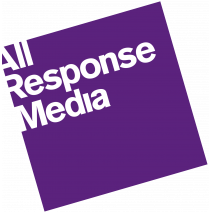As with most advertisers with All Response Media, the response is the main measure of the success of our TV campaigns and other media channels. Maintaining response as a measure of success while moving towards a brand TV creative is certainly a challenge, but the two are certainly not mutually exclusive. It is vital to find a middle ground between the two, and that middle ground can be through really small and simple inclusions, such as a voice-over.
We have the numbers to prove just how important it is to have voice-overs and calls to action on TV creatives to improve response rates (RRs) and drive the ultimate goal of customer acquisition. Below, you can see the improvements on a retail advertiser’s TV cost per web visit (CPV) – as reported by RAPS within an attribution window – after moving from a brand-led, musical creative with no voice-over or proper focus on product, versus the exact same ad but with a voice-over.
Source: ARMalytics® RAPS function
The same is also illustrated below, with another retail advertiser that took a brand-led creative approach for their launch onto TV. On this creative, the product focus was taken away by music, no voice-over or call to action throughout the advert and following low RRs (as reported by RAPS within an attribution window), All Response Media advised the client to add a voice-over and calls to action for the second campaign a month later. The improvement was immediately evident:
Source: ARMalytics® RAPS function
All Response Media Viewpoint
It is important to separate and understand the difference between the purpose of a brand ad and a direct response (DR) ad. Brand ads can significantly boost brand metrics which can provide long-term benefits, such as being front of mind, which in turn develops a consumer’s consideration and purchase intent. These softer metrics can often take a bit of time to develop, and some brands see this as a core measure of success. However, the purpose of a DR ad is to drive immediate action and customer acquisition: building the business first. The latter doesn’t mean that a brand can’t be built and the creatives have to be 90” long, with lengthy product descriptions, six calls to action and a heavily incentivised response (these are still important for driving response nonetheless). However, there is always a balance to be found.
During ad breaks, people may become distracted, so catching their attention within the first few seconds of a creative is fundamental. Therefore ensuring the viewing audience knows what the product is within those first few seconds is also vital. This can be delivered in really simple ways, such as having the logo on screen throughout the entire ad, or clear representations of products from the start. Ensuring that there are verbalised product descriptions, even if they are simpler in support of the visuals, and adding a call to action towards the end for example, with the inclusion of “today” or “now” can massively bolster the responsiveness of a creative, as seen above from the two retail advertisers.
Thus, brand and response are not entirely separate entities. Inclusions of really simple response attributes to quirkier visuals can boost a creative’s strength and allow you to find a balance between the essentials of building a business, and developing long-term brand equity

